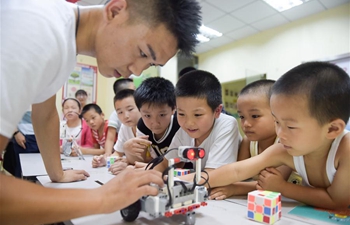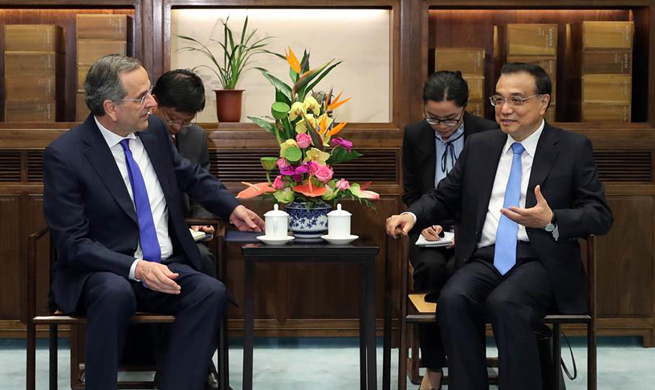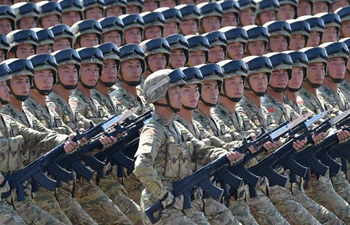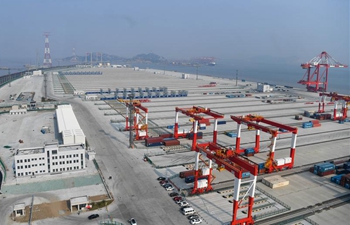CHONGQING, July 27 (Xinhua) -- When Liu Yuan started work at Changan Automobile at the age of 16, he never imagined he would one day earn as much as the company's vice president.
In his 30 years at the company, Liu has fixed all kinds of problems and made many improvements to the production line, saving the company millions.
Colleagues call him a "miracle machine doctor," and the company has rewarded him with a top salary.
Liu's knowledge does not necessarily make him feel proud, but sharing it does. In his "skills master studio" at Changan Automobile, Liu has trained hundreds of technicians and hopes to train many more.
In Chongqing, 134 such studios are helping college graduates and new entrants gain expertise in fields including hairdressing, stonemasonry and cooking, preparing them for a job market that increasingly calls for skilled workers.
On the sidelines of the 2017 BRICS labor and employment ministers meeting that ended in Chongqing on Thursday, skills masters from various fields presented their work as a demonstration of China's efforts to improve the quality of its labor force.
As China tries to move up the value chain in the manufacturing sector and comes to rely more on consumption and the service sector, the structure of the workforce is going through a great upheaval.
"Companies were operating at the lower-end of the international supply chain," said Zhou Tianyong of the Party School of the Communist Party of China Central Committee. "Now we're moving up, creating jobs and increasing wages."
From 2012 to 2016, the number of workers in the service industry increased by 60 million to 43.5 percent of the workforce. In 2012, the figure was only 36.1 percent. Services now account for 54.1 percent of GDP.
Like any economy in transition, China faces a substantial skills gap that it is actively trying to fill. The demand for all skilled workers is around 1.5 times the supply. For highly skilled workers, twice as many are needed as are available.
To address the imbalance, China is offering incentives for skilled workers, spending on vocational training and working to improve the overall quality of the labor force across the board.
According to He Liangping of the Ministry of Human Resources and Social Security, the central government has spent more than 2 billion yuan (300 million U.S. dollars) in raising the number of highly skilled workers to 48 million by the end of last year
China has also set up 476 training bases and 594 masters' studios like Liu's. According to Zhou Yuan of Chongqing human resources and social security department, the city is even helping vocational school students train overseas.
Progress in science and technology or changes in economic and demographic structure invariably bring challenges to labor markets around the world, and the international community should find common ways of dealing with them, said Minister of Human Resources and Social Security Yin Weimin.
Yin wants the BRICS countries to work together on employment, inclusive growth and training.
"There are common issues to be confronted, and common progress in confronting them. That's why coordination and shared experiences in those areas make such obvious sense," said Guy Ryder, director-general of the International Labor Organization.
















